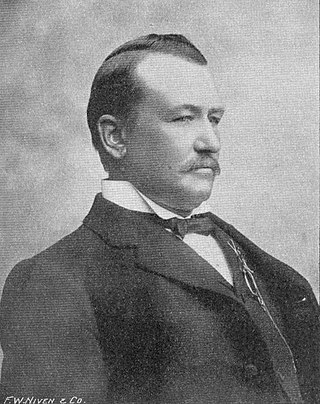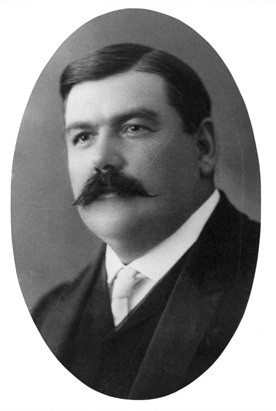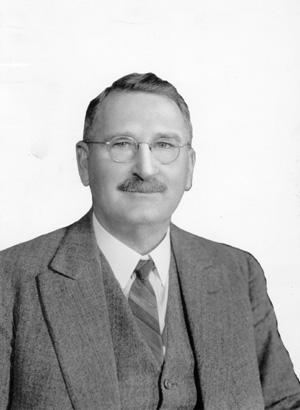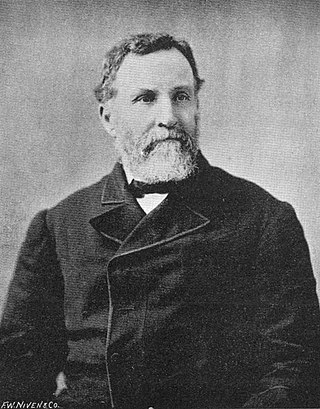Related Research Articles

The premier of Western Australia is the head of government of the state of Western Australia. The role of premier at a state level is similar to the role of the prime minister of Australia at a federal level. The premier leads the executive branch of the Government of Western Australia and is accountable to the Parliament of Western Australia. The premier is appointed by the governor of Western Australia. By convention, the governor appoints as premier whoever has the support of the majority of the Western Australian Legislative Assembly. In practice, this means that the premier is the leader of the political party or group of parties with a majority of seats in the Legislative Assembly. Since Western Australia achieved self-governance in 1890, there have been 31 premiers. Mark McGowan is the current premier, having been appointed to the position on 17 March 2017.

George Lionel Throssell was the second Premier of Western Australia. He served for just three months, from 15 February to 27 May 1901, during a period of great instability in Western Australian politics.

George Leake was the third Premier of Western Australia, serving from May to November 1901 and then again from December 1901 to his death.

Alfred Edward Morgans was the fourth Premier of Western Australia, serving for just over a month, from 21 November to 23 December 1901.

Sir Walter Hartwell James, was the fifth Premier of Western Australia and an ardent supporter of the federation movement.

Sir Cornthwaite Hector William James Rason, better known as Hector Rason, was the seventh Premier of Western Australia.

Major General Sir Newton James Moore, was an Australian politician, businessman and army officer. He served as the eighth Premier of Western Australia from 1906 to 1910 and, following service in the First World War, was a member of the House of Commons of the United Kingdom from 1918 to 1932. He was the father of Sir Rodney Moore.

Frank Wilson, was the ninth Premier of Western Australia, serving on two separate occasions – from 1910 to 1911 and then again from 1916 to 1917.

Sir Henry Bruce Lefroy was the eleventh Premier of Western Australia.

The Throssell Ministry was the second Ministry of the Government of Western Australia. It succeeded the Forrest Ministry on 15 February 1901 after Sir John Forrest's move from state to federal politics, and was led by Forrest's choice of successor, George Throssell. However, no clear winner emerged from the April 1901 state election, and rather than test his support in the Assembly, Throssell and the Ministry he led resigned on 27 May 1901, allowing the Leake Ministry led by Opposition Leader George Leake to take office.
The First Leake Ministry was the third Ministry of the Government of Western Australia and was led by Premier George Leake, who had hitherto been the Leader of the Opposition. It succeeded the Throssell Ministry on 27 May 1901 after George Throssell's resignation as premier following the inconclusive result of the April 1901 state election.

Frederick Illingworth, was an Australian politician, who was a Member of Parliament in two Australian colonies, and a government minister in Western Australia. As a financer of land speculation in Victoria in the 1880s, he was heavily involved in the Victorian land boom.

John Collings Willcock was the 15th Premier of Western Australia, serving from 1936 until 1945. He was a member of the Australian Labor Party.

George Randell was an Australian businessman and politician. He served intermittently in the Parliament of Western Australia between 1875 and 1910, including as a minister in the government of Sir John Forrest.
This is a list of members of the Western Australian Legislative Assembly between the 1901 election and the 1904 election, together known as the Fourth Parliament.
The Rason Ministry was the 8th Ministry of the Government of Western Australia and was led by Ministerialist Premier Hector Rason. It succeeded the Daglish Ministry on 25 August 1905 after the previous Labor minority administration fell on a vote of no confidence. On 7 May 1906, it was followed by the Moore Ministry led by Minister for Lands Newton Moore.
The Lefroy Ministry was the 13th Ministry of the Government of Western Australia and was led by Nationalist Premier Sir Henry Lefroy. It succeeded the Second Wilson Ministry on 28 June 1917 due to most members of the former Liberal Party, of which the previous Premier, Frank Wilson, had been the leader, pledging allegiance to the new party. The Lefroy Ministry, which was the first Coalition ministry in Western Australia, was also the only Ministry of a non-Labor government to be chosen by caucus.
The First Mitchell Ministry was the 15th Ministry of the Government of Western Australia and was led by Nationalist Premier James Mitchell. It succeeded the Colebatch Ministry on 17 May 1919 after the collapse of Hal Colebatch's brief service as Premier. It assumed a stability which had been absent from Western Australian politics since the 1914 election. The ministry was followed by the Collier Ministry on 15 April 1924 after the Nationalist coalition lost government at the state election held on 22 March.

The Minister for Education and Training is the member of the Government of Western Australia responsible for maintenance and improvement of Western Australia's system of education, and is answerable to the Parliament for all actions taken by the Department of Education under their authority. The holder of the office is usually an elected member of parliament from the ruling party or coalition, presently Tony Buti of the Labor Party.

Charles John Moran was an Australian politician who served in the Legislative Assembly of Western Australia from 1894 to 1901 and again from 1902 to 1905. He was a minister in the government of George Throssell.
References
- Black, David; Bolton, Geoffrey (2001). Biographical Register of Members of the Parliament of Western Australia, Volume One, 1870–1930 (Revised ed.). Parliament House: Parliament of Western Australia. ISBN 0730738140.
- de Garis, Brian (1991). "Self-Government and Political Parties". In Black, David (ed.). The House on the Hill: A History of the Parliament of Western Australia 1832–1990. Perth, Western Australia: Parliament of Western Australia. ISBN 0-7309-3983-9.
- Bolton, Geoffrey; Mozley, Ann (1961). The Western Australian Legislature, 1870-1930. Canberra: Australian National University. (no ISBN)
- Reid, Gordon; Oliver, Margaret R. (1982). The premiers of Western Australia, 1890-1982. University of Western Australia Press. ISBN 0-85564-214-9.